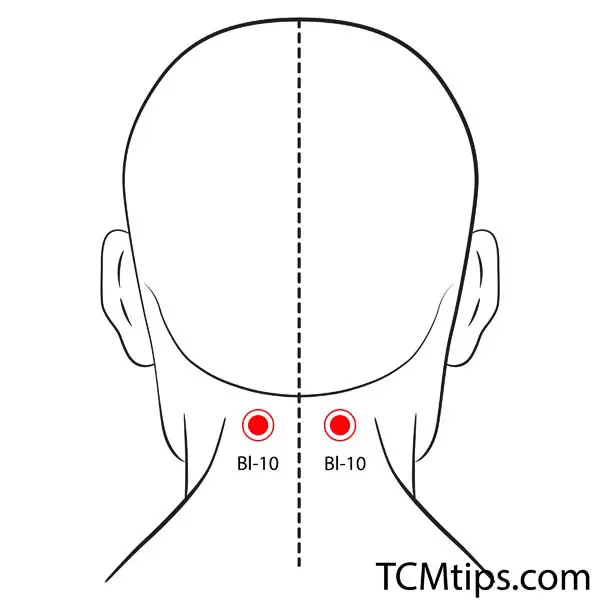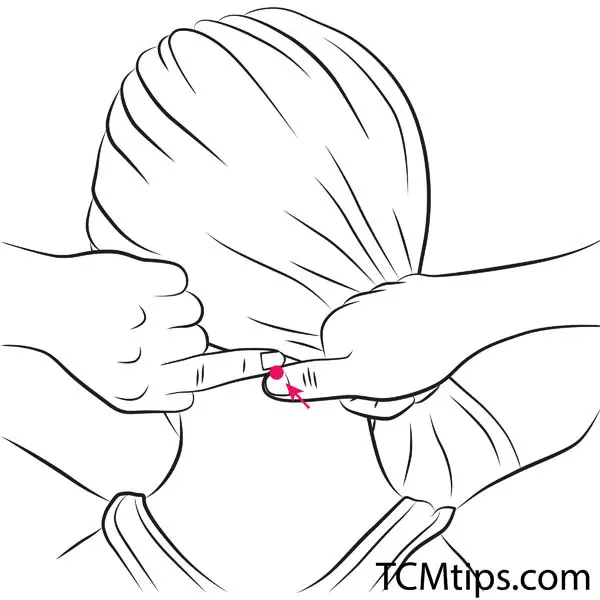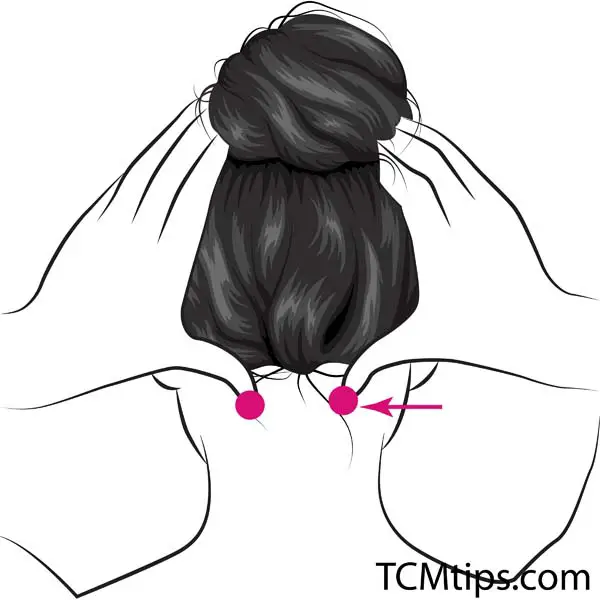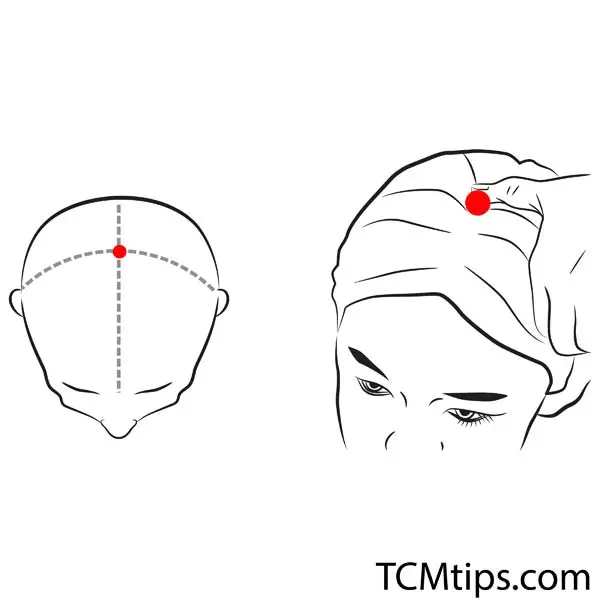Stress causes gradual damage to the three elements of the body – qi, blood, and water – leading to the body losing its balance and becoming unhealthy. In Traditional Chinese Medicine, it is believed that stress affects the Qi by disturbing its circulation and blocking the mood, and it affects blood by draining it and causing a lack of sleep. To restore the normal flow of qi, blood, and water and balance the body, TCM uses the pressure points on the head to relieve stress which is the main cause of the imbalance.
What Is Stress And How Does It Affect The Body?
Stress is the feeling you get when you experience emotional or physical tension. Thoughts and events that make us frustrated, angry, or nervous lead to stress. When you battle with these thoughts or events daily, it leads to accumulated stress. In TCM, it is believed that stress is a major threat to the composition of the body – Qi, Blood, and Water. Qi is responsible for warming the body and metabolism, blood is responsible for nourishing the body, and water provides the other fluids the body needs that aren’t blood. Qi is like the engine house of all three elements as it makes it possible for blood and water to circulate throughout the body to deliver nutrients.
Stress disturbs the circulation of qi, messing up your mood, increasing the tension in the chest and abdomen, and disturbing the body’s normal rhythm. It is worse when stress accumulates because then, it weakens the function of the sympathetic and autonomic nervous systems. And when the autonomic nervous system stops working properly, there is poor blood circulation in the body. As blood plays a vital role in the body, poor circulation implies that the nourishment does not circulate to the muscles and nerves causing muscle stiffness, fatigue, back pain, irregular menstruation, and infertility.
It is then important that we manage stress, as stress cannot be completely eradicated. To do this, you need the pressure points on the head to relieve stress, which is what this article will show you.
What Are The Long-Term Effects Of Stress?

When you ignore stress in your body and it piles up, it leads to the following:
- Stagnation of Qi: Too much stress and dissatisfaction worsen the flow of the liver qi and the liver is responsible for controlling the flow of qi throughout the body and the five organs.
- Lack of Qi and Blood: If you ignore the stress that has led to stagnation of the Liver Qi, it begins to affect the functioning of your internal organs, qi, and blood, making your body grow weak. Poor functioning of your internal organs, qi, and blood will also lead to mental and physical challenges.
- Stagnation of Blood: If you continue ignoring the stress piling in your body, your blood stagnates, leading to new diseases.
Because of these, it is important to tackle stress as soon as they come.
Why Do The Pressure Points On My Head Hurt?
Tension headaches are the main cause of pain in the head. These mild or intense headaches often occur from the tightness or tenseness of the muscles from the base of your skull to your neck and mid-back. The position of these muscles coincides with the location of some pressure points on the head, which is why it seems like the pressure points hurt your head. Ironically, it takes massaging these pressure points on the head to rid yourself of these headaches and stress. However, your massage therapy on pressure points on your head should be gentle. Avoid applying firm pressure on these points as they will hurt your head.
A 2016 research supports the massaging of head acupoints to relieve stress. The research applied acupuncture treatment on acupoints from EX-HN5 to GB21 in four weeks based on grey relationship weighting and found that it benefits the autonomic nervous system. The result of the research showed that massaging these stress pressure points on the head relaxed physiological stress and improved the activity of the sympathetic and parasympathetic nerves to bring more balance to the human body.
Pressure Points On The Head To Relieve Stress
Now that you have seen how stress affects the qi, blood, and water and ruins the healthy body functioning, and how effective the stress pressure points on the head are, let’s proceed to discuss these acupoints in detail.
Acupoint: EM-5 (Other Names: Tai Yang)

The first of the pressure points on the head to relieve stress that you should think about when you’re stressed is EM-5. Called Taiyang in Chinese, this extra acupoint can be found close to the eyes. It is about one thumb-width from the outer corner of the eye, and at the midpoint between the corner of the eye and the outer end of the eyebrow.
EM-5 is a popular acupoint for nerve fatigue. The reason for this is its location which makes it effective for loosening the tension on the entire scalp and around the eyes. Once these muscles are loosened, you feel calm and relaxed; your eyes are refreshed, dark feelings slide away, and your face is brightened.
EM-5 is also effective in relieving pain, which is why it is used clinically to treat all types of headaches, eye pain, and toothache. It is also one of the effective acupressure points for cataracts.
Acupoint: Bl-10 (Other Names: Urinary Bladder-10/Tian Zhu/Celestial Pillar)

The next stress pressure point in the head is Bl-10 or Tianzhu as it is called in Chinese. This urinary bladder meridian pressure point is located on the neck. To locate this acupoint, raise your chin lightly, hold your head with both hands, and slide your thumbs into the depression around the edges of your hairline, beside the trapezius muscles on both the left and right side of the nape of your neck.
Depending on your mental condition, you can either apply gentle pressure or deep pressure to Bl-10. Gentle pressure is for when you feel depressed, while deep pressure is for when you feel irritated. Pushing Bl-10 helps to adjust the autonomic nervous system and relieve mental fatigue and stress.
Acupressure practitioners also use Bl-10 to treat neck and shoulder stiffness, headaches, chronic rhinitis, nasal congestion, and sore throat. While it also helps stabilize blood pressure, this stress pressure point on the neck serves as acupressure for dementia.
Acupoint: GV-16 (Other Names: The Governing Vessel-16/Feng Fu/Wind Palace)

Acupoint GV-16 is another stress pressure point on the neck that you should easily push when you are physically and emotionally drained. You’ll find GV-16 on the back of the neck, on the midline of the head, and in the depression just below the external occipital protuberance (a small bulge at the base of the skull).
GV-16 or Fengfu as it is called in Chinese is responsible for clearing the head, dispelling wind, and calming the Shen. While it provides certain benefits to the head and neck, GV-16 effectively serves as one of the acupressure points to relieve anxiety attacks.
Clinically, Fengfu is used to treat sore throat, neck pain, vertigo, and post-apoplexy aphasia.
Acupoint: GB-20 (Other Names: Gallbladder-20/Feng Chi/Wind Pool)

Yet another stress pressure point on the neck that you should know is Gall Bladder 20. Also known as Fengchi in Chinese, which means Wind Pool, Bl-20 is located on the nape of the neck, on the same level as GV-16, but at the top of the muscles on both the right side and left side of the muscles that link the neck to the skull.
The main function of GB-20 in TCM is to eliminate qi and blood stagnation. It also helps to clear the head and provides benefits to the eyes, nose, and ears. Based on these functions, GB-20 is used clinically to treat the common cold, eye pain, neck pain, severe headaches, dizziness, and epilepsy.
It is one of the acupuncture points for concussion that you should never forget.
Acupoint: GV-20 (Other Names: The Governing Vessel-20/Bai Hui/Hundred Convergence)

GV-20, Baihui as it is known in Chinese, or Hundred Meetings in English is one of the vital pressure points on the head to relieve stress. You’ll find it at top of your head, 6 finger-width from the midline of the hairline at the front of your head. The best way to locate it is to trace a finger from the tip of both the right and left ears and connect it to the center of the head. The point where the two fingers meet is GV-20.
GV-20 is called a Hundred Meeting because it is the crossing point of the governing vessel and the six Yang meridians. This makes the acupoint suitable for dissipating frustration as a result of stress. Research shows that GV-20 is one of the pressure points to press for social defeat stress.
Massaging this stress pressure point in the head helps regulate the autonomic nervous system, thus eliminating frustration and depression. It is the acupoint to massage when you’re tired or dazed, or have stiff shoulders and headaches. It is also part of the acupressure points for memory.
Conclusion
Stress is not good for the healthy functioning of the body. Accumulated stress poses a danger to the smooth circulation of our body’s qi, blood, and water, leaving the body susceptible to a variety of sicknesses. To manage stress and boost the functioning of qi, blood, and water, we need the following pressure points:
- EM-5 to prevent nerve fatigue
- Bl-10 to adjust the autonomic nervous system and relieve mental fatigue and stress
- GV-16 to clear the head and calm the Shen
- GB-20 to eliminate qi and blood stagnation
- GV-20 to regulate the autonomic nervous system and eliminate depression and frustration

Try our Anti-Aging Gua Sha Tool designed to bring out your skin’s natural glow.
Best Gua Sha Product- Anti-Aging: The tool is designed to target 11 specific aging signs such as wrinkles and sagging skin. By following the 7-step routine, users can improve skin firmness and reduce fine lines naturally.
- Enhances Skincare Routine: It works effectively with serums and lotions, boosting absorption and efficacy of skincare products.
- Visible Skin Improvement: Users can expect a smoother complexion, reduced puffiness, and a more youthful appearance.
 P. Sze
P. Sze 

















